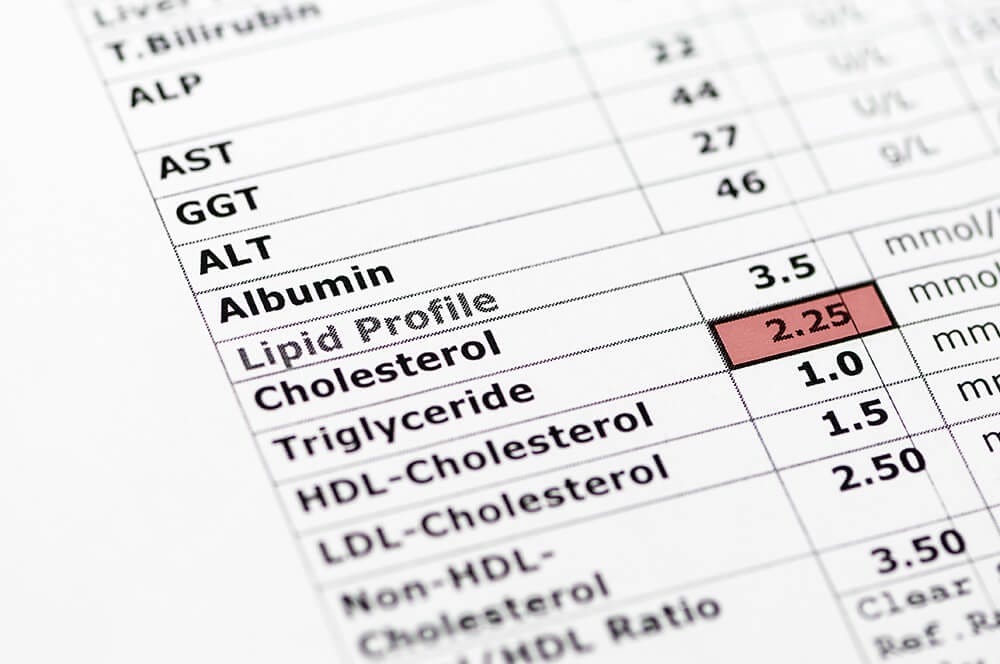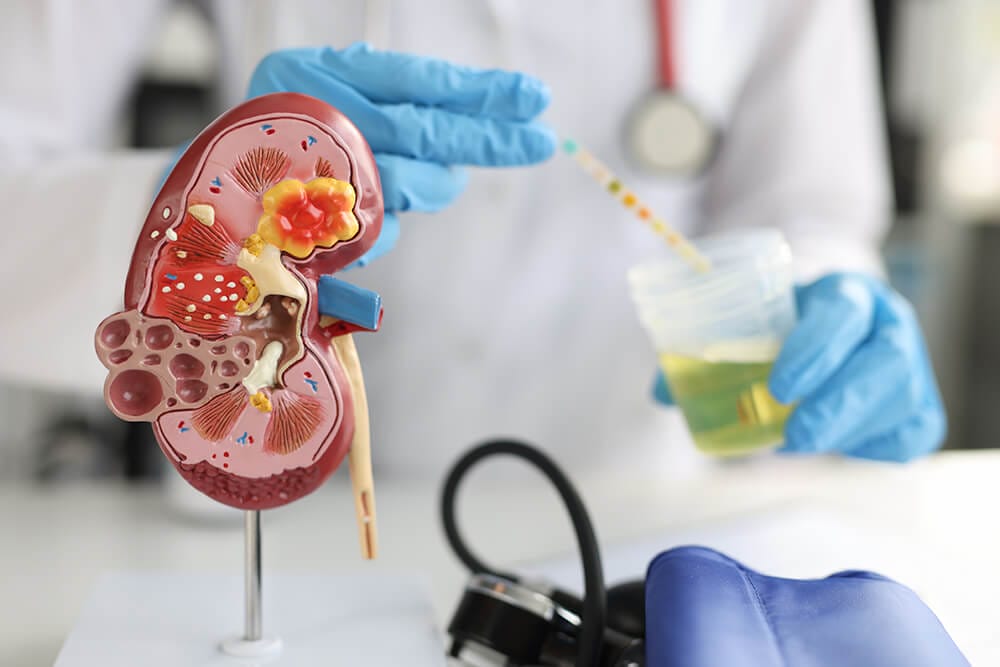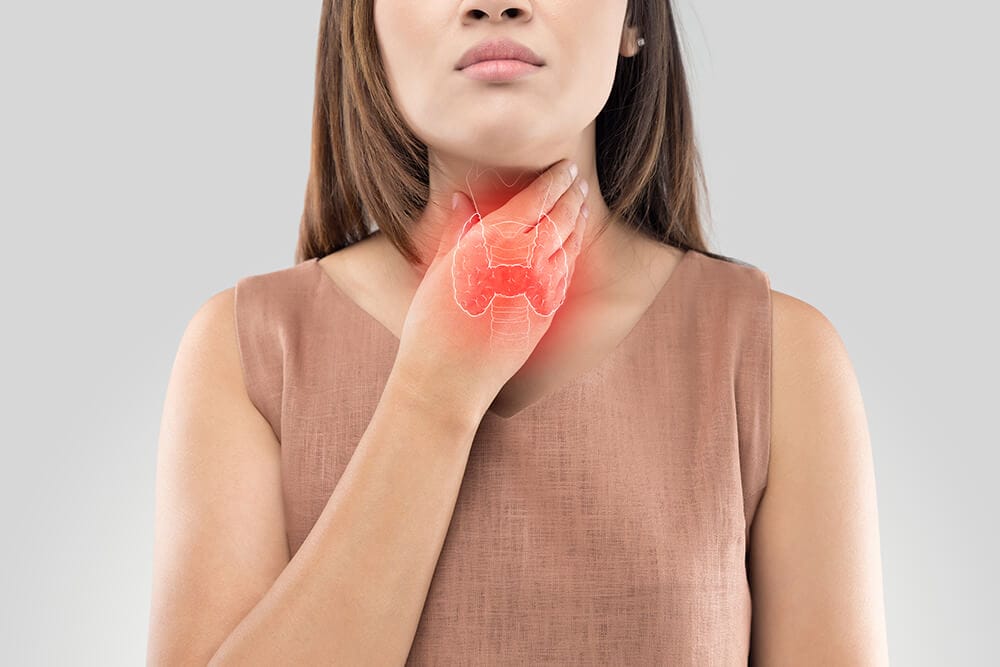
Triglycerides Normal & Danger Levels: Treatment & Prevention
Overview on triglycerides level
The body relies on energy to perform its daily functions. Basic activities like breathing, moving, or even sleeping require energy, as the body keeps on functioning to stay alive. The energy is gotten from meals, especially fat. When the required amount of fat is used, the excess calories are converted to fat for storage. These fats are triglycerides. Having the correct triglyceride levels in the body is essential for the person to stay healthy and not become obese. Obesity can cause various ailments and sometimes, genetics can be the cause of high or low triglyceride levels. Having a correct understanding of triglycerides and its normal range is essential.
Read on to understand what level of triglycerides is dangerous and how to counter it.
Range of normal triglycerides levels
Triglycerides are the most common type of fat found in the body. Both triglycerides and cholesterol are made in the liver and both are associated with fat and obesity. What sets them apart are the ways they are made and the functions they perform.
Abnormal triglyceride levels are also considered to be equally harmful. Extra calories are usually converted to triglycerides and stored in the body. These fat cells are later converted back to calories for energy, when the body requires it. But, if a person leads a sedentary life, he/she is at a risk of accumulating triglycerides in their body.
The normal triglycerides level is determined along with a scale that provides an indication of how much risk the person is at when the levels go up or down. The level is measured in milligrams per deciliter or mg/dL. The scale is:
| Scale | Triglyceride Level (adults) |
| Normal | Less than 150mg/dL |
| Borderline | 150 to 199 mg/dL |
| High | 200 to 499 mg/dL |
| Very high | 500 mg/dL and above |
Symptoms of changes in triglycerides level
Triglycerides are made when unused calories are left. The liver converts the calories to fat and stores them as reserves. Usually, these fat cells are used up when the body requires energy and food is not available. What makes triglycerides different from cholesterol is that the latter is a lipoprotein that aids in cell formation and hormone production while the former is simply unused calories. Pregnancy can also cause fluctuations in triglyceride levels.
When the triglycerides are not used up and additional food is introduced which is again converted to fat cells, body mass begins to change. One of the main symptoms associated with high triglyceride levels is obesity and all symptoms associated with excessively obese people.
Testing of triglycerides level
The triglyceride levels are tested via a lipid profile test. This includes tests for cholesterol, HDL or high-density lipoprotein, LDL or low-density lipoprotein, and triglycerides. LDL and HDL are types of cholesterols and they too play a vital role in the regulation of bodily functions when they are within the normal range.
Triglyceride tests should be done on a routine basis, especially for people who are above 35 and who might be at risk of becoming obese. That said, people who are in their 20s should consider getting tested for triglycerides and overall lipid profile at least every 4 years to understand how their body fat accumulation is going or if they need to make changes in their lives.
Home treatment of triglycerides level
Often triglyceride fluctuations can be taken care of with certain changes in the lifestyle. These home treatments are long-term commitments that help in not only lowering the overall body fat, but also in controlling various other ailments.
-
- Aim for a healthy weight. The need to stay within a healthy weight range is the first step towards having the triglyceride stay within a normal scale. This healthy weight need not be what the commercial world deems fit but what the body deems fit. Consulting a dietitian will help.
- Cutting out excess sugar and carbs. Diet plays a vital role in keeping the body weight in control. When an obese person has to lose weight, the first thing they need to do is create a calorie deficiency. This will trigger the body to use triglycerides to meet the basic metabolic energy needs.
- Work out more. To make the calorie deficiency more effective, working out should be made part of the daily routine. This can be hitting the gym or simply walking or running around the neighborhood.
Medical treatment of triglycerides level
Sometimes, if the elevation in the triglyceride level is caused due to medical factors and home remedies are not helping, doctors might prescribe medications to help limit and lower the triglyceride level. For medical conditions associated with elevated triglyceride levels, treating the underlying cause is the first step. Medications suggested include:
-
- Statins are often prescribed to people who have a history of diabetes and arterial blockages. This medication effectively lowers cholesterol and triglycerides. The most commonly used statins are atorvastatin calcium and rosuvastatin calcium.
- Fibrates are also prescribed to lower triglyceride levels. However, people with severe kidney or liver disorders are not prescribed fibrates. The most commonly used fibrates are fenofibrate and gemfibrozil.
- Niacin or nicotinic acid helps lower both LDL and triglycerides.
- Fish oil like omega-3 fatty acids helps reduce triglycerides significantly.
Risk factors for high triglycerides levels
When triglyceride levels are high, it can lead to obesity and accumulation of body fat, which can further lead to serious conditions like:
-
- Diabetes
- Hypothyroidism
- Pancreatitis, or similar inflammatory conditions
- Kidney disorders
- Liver disorders like cirrhosis
- Metabolic syndrome
- Coronary artery diseases
- Carotid artery disease
Risk factors for low triglycerides levels
Generally, low triglyceride levels are not a matter of concern and there are no lower limits for the triglyceride level, as with electrolytes and hormones. Triglycerides are formed when the liver converts excess calories as future energy reservoirs. But, having very low triglyceride levels can be dangerous, especially if they can lead to other disorders and conditions.
Very low triglyceride levels can indicate:
-
- Malnutrition – when the body does not get the required daily calorie or essential nutrients over a prolonged time, malnutrition occurs. Sometimes, over-saturation of certain nutrients can also lead to malnutrition. But, in either condition, the triglyceride level is affected. Symptoms include weight loss, irritability, swollen stomach while the rest of the body remains thin, brittle nails and hair, and hollow eyes and cheeks.
- Malabsorption – when the small intestine fails to absorb essential nutrients from the digested material, which leads to malnutrition, the condition is known as malabsorption. Malabsorption can mean that there is damage to the digestive tract and the hormones aiding in absorption are not being produced. Symptoms include fatty stools, foul-smelling, and pale stools with oil droplets floating around them.
- Hyperthyroidism – having an overactive thyroid affects metabolism, which leads to sudden and unintentional weight loss. This condition is called hyperthyroidism.
Prevention of changes in triglycerides level
Letting go of a healthy lifestyle and accumulating body fat is easy. Overeating and feeling lethargic can cause severe damage to not only the physique of a person, but also to his/her emotional and mental health. Opting for lowering and maintaining a healthy lifestyle is the best way to stay healthy. Certain preventive measures that can be taken are:
-
- Cutting back on excessive sugar consumption
- Quitting smoking
- Cutting back on alcohol consumption
- Working out more
- Meditating to destress
- Sleeping better
When does the need for doctor consultation for triglyceride changes arise?
The need to consult a doctor when triglyceride levels are high arises when these levels are beyond the categorized range. At times, changing the lifestyle can do the trick, but in the case of genetic disorders, lifestyle changes in a sudden manner can aggravate the issue.
Genetics or other conditions can cause obesity. Thus, getting an accurate summation of the cause for the accumulation of body fat is crucial for correct treatment. At times, the levels can be high without any discerning symptoms. Only a doctor can properly estimate the issue and prescribe tests to narrow down the diagnosis and begin proper treatment.
Conclusion
Triglycerides are an essential part of daily life. When excess food is consumed without any proper outlet, calories are stored as triglycerides to be used later. Often, when a person goes for a few days without food, this extra reservoir comes to the rescue to keep the body functioning. But, leading a sedentary life and not regulating the diet can lead to excess body fat creation.
Aiming for a healthy lifestyle can cause the triglyceride levels to be within the stipulated range. Some fluctuations in this level are normal and are dependent on the time the test is taken. For people who are genetically at a risk of having high triglyceride levels, routine testing and consultation with a doctor is a must to stay healthy.
FAQs
What medications cause a rise in triglyceride levels?
There are certain medications that can cause an elevation in triglyceride levels. These include steroids, beta-blockers, diuretics, and immunosuppressant drugs. People on these medications are often suggested to take routine lipid profile tests and maintain a balanced diet.
How to keep track of calories consumed and used?
Calories consumed and utilized are the key to understanding triglyceride levels. There are many apps that track the workouts done and provide a detailed report about what nutritional values certain food has. These apps and trackers can help keep calorie consumption under control.
Can fruits cause high triglyceride levels?
While fruits are considered to be good for overall health and helpful for weight loss, relying solely on fruits can become an issue. Fruits contain fructose—fruit sugar—and different fruits have different levels of this fructose. Consuming fructose-rich fruits can actually hinder lowering triglyceride levels.
References

















